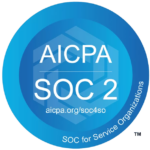Featured this week
Bromine
Sodium bicarbonate, aka baking soda or bicarbonate of soda, is a soluble odourless wBromine is a chemical element with the symbol Br, an atomic number of 35, and an atomic mass of 79.904. It is in the halogen element group. [1] At ambient temperature bromine is a brownish-red liquid. It has a similarly coloured vapour with an offensive and suffocating odour. It is the only non-metallic element that is liquid under ordinary conditions, it evaporates easily at standard temperature and pressures in a red vapour that has a strong disagreeable odour resembling that of chlorine. Bromine is less active chemically than chlorine and fluorine but is more active than iodine; its compounds are similar to those of the other halogens. Bromine is soluble in organic solvents and in water. [2]
Download the whole PDF below
Featured Articles
Key information about the new scheme
There is now a new Australian industrial chemicals law – the Industrial Chemicals Act 2019. This law creates a new regulatory scheme for the importation and manufacture of industrial chemicals in Australia (to replace NICNAS) from 1 July 2020. This law also gives effect to the ban on the use of new animal test data for ingredients solely used in cosmetics. Industrial Chemicals General Rules, Categorisation Guidelines and Transitional Rules — now final.
On 2 December 2019, after extensive consultation with stakeholders, NICNAS announced that key documents are now final. These documents are as follows:
• Industrial Chemicals (General) Rules 2019
• Industrial Chemicals Categorisation Guidelines (final draft)
• Industrial Chemicals (Consequential Amendments and Transitional
Provisions) Rules 2019
NICNAS will soon release stakeholder submissions following the public consultations on the General Rules and Categorisation Guidelines summary of submissions and our responses to issues raised
General Rules
The General Rules set out the details for the regulation of the importation and manufacture of industrial chemicals in Australia under AICIS:
• View the General Rules
• View the Explanatory Statement to the General Rules
• Read our summary of key changes we’ve made to the General Rules Categorisation Guidelines (final draft)
The final draft Categorisation Guidelines set out technical details and requirements of the importation and manufacture of industrial chemicals in Australia. The Executive Director of AICIS will sign-off on these Guidelines so they take effect from 1 July 2020. Further information is available at:
• Download the Categorisation Guidelines [PDF 728 KB]
• Download the Categorisation Guidelines [Word 141 KB]
• List of chemicals with high hazard for categorisation [Excel 797 KB]
• Read our summary of key changes we’ve made to Categorisation
Guidelines
Transitional Rules
The Transitional Rules cover matters relating to the changeover from NICNAS to AICIS. They will work together with the Industrial Chemicals (Consequential Amendments and Transitional Provisions) Act 2019.
• View the Transitional Rules
• View the Explanatory Statement to the Transitional Rules
Transitional highlights
NICNAS exemption categories will continue to be available until 31 August
2022 for introduction of chemicals not listed on the AICIS Inventory.
NICNAS low volume and controlled use permits will remain in force until at
least 30 June 2022. Further information is available at:
• Go to our transitions section to find answers to your most asked
questions
• View the Transitional Provisions Act
Other legislation
There is also 3 Industrial Chemicals Charges Acts authorising the imposition of charges on importers and manufacturers of industrial chemicals.
• View the Industrial Chemicals Charges (Customs) Act 2019
• View the Industrial Chemicals Charges (Excise) Act 2019
• View the Industrial Chemicals Charges (General) Act 2019
NICNAS, http://www.nicnas.gov.au/Publications/Chemical_Gazette
Spray painting fibre bandages onto wounds
With newly developed technology, medical personnel can manufacture a bandage with drug-delivery capabilities directly onto a wound. Electrospinning is a well-developed method for developing polymer fibres for a wide variety of applications. If biocompatible materials are used, the fibres produced can be used for biomedical applications. But electrospinning requires very high voltages, making direct deposition of the fibres onto biological material dangerous due to the shock hazard it creates. A group of researchers at Montana Technological University has developed a portable electrospinning device with a confined electric field that can safely deposit bandages and drugs directly onto biological surfaces. The group describes the instrument—which they call the electrostatic and air driven device—in the Journal of Vacuum Science & Technology B. Instead of using the voltage difference between the tool and a surface to deposit the fibres, the new device uses air to spray the fibres out onto the surface, like a can of spray paint. “In spray painting, pressurised gas forces direct particles toward a surface, creating a sort of deposited material,” said author Lane Huston, a mechanical engineering graduate student at Montana Tech. “Like spray painting, the EStAD device is used by directing its nozzle at the desired surface during operation, causing a fibre mat to be deposited onto that surface.” By applying this spray paint-like mechanism, this device can be used to cover wounds and provide controlled drug release over time. The deposited fibres adhere to materials containing internal moisture, such as human skin. Though use of electrospun fibres for effective drug delivery has been established in the past, previous methods have required a wound to be placed directly into the electric field path. In that configuration, the only safe option is predepositing fibres onto a surface, such as parchment paper, to collect and store for later use. The device has been tested on a porcine skin incision as well as a gloved human hand and is the first demonstration of depositing the drug-delivering fibres directly onto a wound site safely. The authors hope this new technology will be used to aid doctors, first responders and other medical personnel with wound treatment in rural areas, where immediate medical care may not be readily available. “The bandage material, as well as the drug used, can be chosen on demand as the situation warrants, making modular and adaptable drug delivery accessible in remote locations,” Huston said. Though the direct deposit ion method is its most unique application, the researchers’ new device can also be used as a traditional tabletop electrospinning device.
Phys.org, http://phys.org





